Led Zeppelin, the titans of rock, remain an unparalleled force in music history. Emerging from the late 1960s blues rock scene, they forged a sound that was uniquely their own, blending hard rock intensity with blues roots, folk mysticism, and even orchestral grandeur. Their music continues to captivate generations, and for good reason. From earth-shattering riffs to soaring vocals, Led Zeppelin Songs are more than just music; they are experiences. Let’s dive into some of their most iconic tracks that cemented their legendary status.
Exploring Deep Cuts and Anthems: Unpacking Iconic Led Zeppelin Songs
This exploration isn’t just a ranking; it’s a journey through the diverse soundscape of Led Zeppelin. We’ll delve into tracks that showcase their raw power, their experimental side, and their undeniable songwriting genius. Get ready to rediscover the magic within these timeless Led Zeppelin songs.
In the Evening (1979)
 Led Zeppelin Live Performance featuring Jimmy Page, Robert Plant, John Bonham, and John Paul Jones in Concert
Led Zeppelin Live Performance featuring Jimmy Page, Robert Plant, John Bonham, and John Paul Jones in Concert
“In the Evening,” the opening track from In Through the Out Door, is a fascinating example of Led Zeppelin’s late-era experimentation. Clocking in at over seven minutes, the song is a sonic tapestry woven with Jimmy Page’s Gizmotron-enhanced guitar, John Paul Jones’ Abba-esque synthesizer lines, Robert Plant’s powerful vocals lamenting loneliness, and John Bonham’s signature thunderous drumming, described as sounding like a “crocked wildebeest”. This track represents a unique synthesis of Jones’ electronic music interests and the band’s core rock intensity, ultimately becoming their final grand anthem.
All My Love (1979)
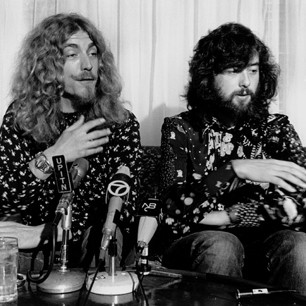 Close-up Portrait of Led Zeppelin's Jimmy Page and Robert Plant
Close-up Portrait of Led Zeppelin's Jimmy Page and Robert Plant
“All My Love,” also from In Through the Out Door, stands out as a deeply personal and majestic Led Zeppelin song. Driven by a sweeping synthesizer solo from John Paul Jones, this track is one of the rare Zeppelin compositions not primarily authored by Jimmy Page. Instead, it is Robert Plant’s poignant and mystical tribute to his son Karac, who tragically passed away in 1977 at the young age of five. Despite reports that Jimmy Page wasn’t fond of “All My Love,” its deeply personal nature, dedicated to Plant’s son, rendered it untouchable from criticism within the band.
Traveling Riverside Blues (1969)
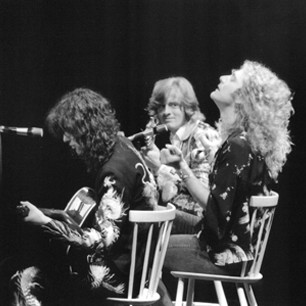 Led Zeppelin Acoustic Performance featuring Jimmy Page, Robert Plant, John Bonham, and John Paul Jones
Led Zeppelin Acoustic Performance featuring Jimmy Page, Robert Plant, John Bonham, and John Paul Jones
“Traveling Riverside Blues,” captured during a BBC Radio session in 1969, offers a glimpse into Led Zeppelin’s improvisational brilliance and blues roots. This rendition of a Robert Johnson classic is a loose, raw moment showcasing Jimmy Page’s manic acoustic slide guitar work. Notably, Robert Plant uses the session to test out the iconic “squeeze my lemon” phrasing that would later become famous in “The Lemon Song” on Led Zeppelin II, highlighting the song’s role in the band’s creative evolution.
Four Sticks (1971)
“Four Sticks,” from Led Zeppelin IV, is an exotic and rhythmically complex song born from Jimmy Page’s innovative guitar riffs. Built around a series of sharp, percussive guitar lines, the song’s unusual time signature, shifting between 5/8 and 6/8, presented significant recording challenges for Led Zeppelin, almost leading to its abandonment. Legend has it that John Bonham, after a pub visit, returned to the studio and masterfully nailed the intricate drumming, using two sticks in each hand, giving the song its distinctive title and cementing its place in Zeppelin’s catalog.
Since I’ve Been Loving You (1970)
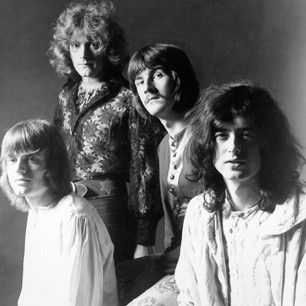 Led Zeppelin Band Portrait featuring Jimmy Page, Robert Plant, John Bonham, and John Paul Jones
Led Zeppelin Band Portrait featuring Jimmy Page, Robert Plant, John Bonham, and John Paul Jones
“Since I’ve Been Loving You,” from Led Zeppelin III, is a slow-burning blues masterpiece that showcases the band’s soulful depth. Jimmy Page reportedly dedicated months to perfecting the guitar solo for this epic track, ultimately deciding that his original demo take was the definitive version. The result is one of Led Zeppelin’s most emotionally resonant songs, with Page’s guitar work ranging from delicate to explosive, John Paul Jones adding fiery organ textures, and Robert Plant delivering a heart-wrenching vocal performance filled with raw emotion.
Tangerine (1970)
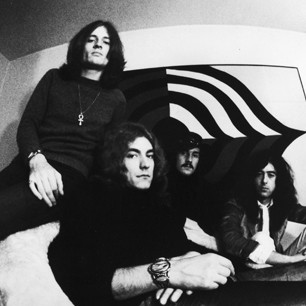 Led Zeppelin Group Photo featuring Jimmy Page, Robert Plant, John Bonham, and John Paul Jones
Led Zeppelin Group Photo featuring Jimmy Page, Robert Plant, John Bonham, and John Paul Jones
“Tangerine,” also from Led Zeppelin III, offers a gentler, country-infused side of Led Zeppelin. This song has roots in Jimmy Page’s past, originating as “Knowing That I’m Losing You,” a track he wrote with Keith Relf during the final days of The Yardbirds in 1968. Page revived the melody for Led Zeppelin, adding new lyrics penned by Robert Plant that explore “love in its most innocent stages.” “Tangerine” is a testament to Led Zeppelin’s versatility, proving their ability to move beyond hard rock and blues while retaining their musical identity.
The Rain Song (1973)
 Jimmy Page Performing a Guitar Solo Live in Concert with Led Zeppelin
Jimmy Page Performing a Guitar Solo Live in Concert with Led Zeppelin
“The Rain Song,” from Houses of the Holy, is a showcase of Jimmy Page’s masterful guitar work and Led Zeppelin’s dynamic range. Featuring layers of acoustic and electric guitar lines interwoven with John Paul Jones’ rich Mellotron chords, the song is a sonic masterpiece. Legend states that “The Rain Song” was conceived as a response to George Harrison’s lighthearted remark that Led Zeppelin didn’t perform ballads. While starting softly, the song builds in intensity, with Plant and Bonham adding their signature power, proving Zeppelin could deliver ballads with just as much impact as their heavier anthems.
Living Loving Maid (She’s Just a Woman) (1969)
 Led Zeppelin with Groupies featuring Jimmy Page, Robert Plant, John Bonham, and John Paul Jones
Led Zeppelin with Groupies featuring Jimmy Page, Robert Plant, John Bonham, and John Paul Jones
“Living Loving Maid (She’s Just a Woman),” from Led Zeppelin II, is a fast-paced, hard-rocking track that, despite its radio popularity, remains a point of contention within the band. Jimmy Page reportedly excluded it from their 1990 box set, and Led Zeppelin never performed it live. Regardless of Page’s reservations, this song, with its driving rhythm and lyrics about a seasoned groupie, became a staple on the airwaves, highlighting the band’s ability to create impactful rock anthems even when they weren’t band favorites.
The Wanton Song (1975)
 Jimmy Page Playing Guitar Live in Concert with Led Zeppelin
Jimmy Page Playing Guitar Live in Concert with Led Zeppelin
“The Wanton Song,” from Physical Graffiti, is characterized by its unforgettable, galloping riff, lauded by Dave Grohl as one of rock’s best. While sharing a rhythmic similarity with “Immigrant Song,” Jimmy Page injects fresh energy with a dynamic, three-dimensional guitar solo. Robert Plant’s evocative lyrics, with lines like “who took my seed from my shaking frame,” add to the song’s raw and powerful nature, making it a standout track in Led Zeppelin’s extensive catalog.
Moby Dick (1969)
 John Bonham Performing a Drum Solo Live on Stage with Led Zeppelin
John Bonham Performing a Drum Solo Live on Stage with Led Zeppelin
“Moby Dick,” from Led Zeppelin II, is John Bonham’s iconic drum solo showcase, evolving from a jam session based on bluesman Sleepy John Estes’ “The Girl I Love She Got Long Black Wavy Hair.” In live performances, “Moby Dick” could extend to an impressive 30 minutes, while the recorded version is a more concise four-minute display of Bonham’s rhythmic genius, featuring syncopated beats and rolling tom-tom patterns. This track cemented Bonham’s status as one of rock’s most innovative and powerful drummers.
In My Time of Dying (1975)
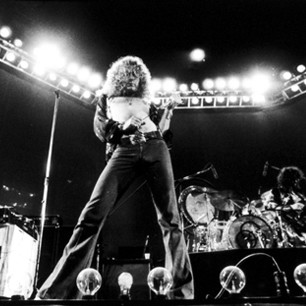 Robert Plant Singing Live in Concert with Led Zeppelin
Robert Plant Singing Live in Concert with Led Zeppelin
“In My Time of Dying,” from Physical Graffiti, is Led Zeppelin’s longest studio recording, transforming a traditional gospel song into a stadium-sized rock epic. Jimmy Page’s grinding slide guitar, John Paul Jones’ shape-shifting bassline, and John Bonham’s colossal, hopping groove create a sonic hydra. In live performances, Robert Plant would humorously dedicate the song to Queen Elizabeth, referencing the band’s then tax-exile status, adding a layer of playful rebellion to the song’s intense performance.
Thank You (1969)
 Robert Plant and his Wife Maureen Wilson in Honolulu, Hawaii
Robert Plant and his Wife Maureen Wilson in Honolulu, Hawaii
“Thank You,” from Led Zeppelin II, offers a rare glimpse into the tender side of Led Zeppelin. As Robert Plant noted, “Sometimes Zeppelin was gross and very indecent, and sometimes it was delicate and beautiful,” and “Thank You” falls firmly into the latter category. The song is a heartfelt and grateful declaration of love from Plant to his wife, Maureen Wilson. John Paul Jones’ regal organ part adds to the song’s beauty, creating a processional feel that contrasts with the band’s more overtly powerful tracks.
No Quarter (1973)
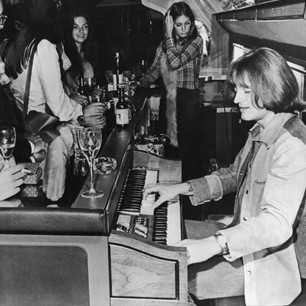 John Paul Jones Playing Organ and Piano with Led Zeppelin
John Paul Jones Playing Organ and Piano with Led Zeppelin
“No Quarter,” from Houses of the Holy, is one of Led Zeppelin’s most atmospheric and psychedelic tracks since “Dazed and Confused.” Primarily a showcase for John Paul Jones, who co-wrote the song, “No Quarter” features a cool, jazzy piano interlude in the middle section, complemented by Jimmy Page’s fluid guitar lines. The song’s dark, mythical lyrics, such as “Walking side by side with death/The devil mocks their every step,” are considered by some to be early seeds of heavy metal mythology.
Houses of the Holy (1975)
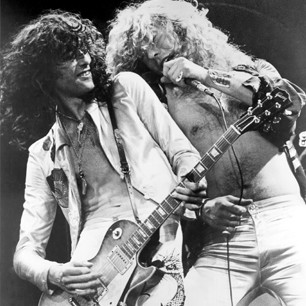 Led Zeppelin Live Performance featuring Jimmy Page and Robert Plant
Led Zeppelin Live Performance featuring Jimmy Page and Robert Plant
“Houses of the Holy,” from Physical Graffiti, despite being the namesake of their previous album, was initially shelved for sounding too similar to “Dancing Days.” Resurrected for Physical Graffiti, this stomping, energetic track features Jimmy Page’s sharp, fragmented guitar riffs and Robert Plant’s lyrics evoking fertility rites and surreal tarot imagery. Producer Rick Rubin praised it as “one of their most compact-feeling songs,” highlighting its directness and powerful energy.
Trampled Under Foot (1975)
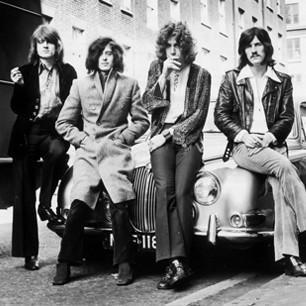 Led Zeppelin Band Photo featuring Jimmy Page, Robert Plant, John Bonham, and John Paul Jones
Led Zeppelin Band Photo featuring Jimmy Page, Robert Plant, John Bonham, and John Paul Jones
“Trampled Under Foot,” from Physical Graffiti, is arguably Led Zeppelin’s funkiest song. Inspired by Stevie Wonder’s “Superstition,” John Paul Jones lays down a clavinet groove, Jimmy Page adds wah-wah guitar textures, and John Bonham provides a proto-disco beat. Robert Plant’s lyrics use car metaphors, reminiscent of Robert Johnson’s “Terraplane Blues,” to create a sexually charged and rhythmically infectious track that showcases the band’s versatility and willingness to experiment with funk elements.
Babe I’m Gonna Leave You (1969)
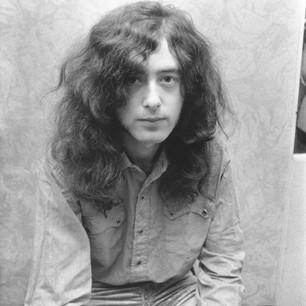 Jimmy Page in a Close-up Portrait with Led Zeppelin
Jimmy Page in a Close-up Portrait with Led Zeppelin
“Babe I’m Gonna Leave You,” from Led Zeppelin, is a powerful reimagining of a Joan Baez song. Jimmy Page discovered the track on a Baez record, and Led Zeppelin transformed it into a heavy, dynamic jam, reminiscent of bands like Blue Cheer and Vanilla Fudge. However, unlike their contemporaries, Led Zeppelin drew inspiration from American folk music and infused it with a level of precision and visceral energy that was unmatched, making their version of “Babe I’m Gonna Leave You” uniquely their own.
Fool in the Rain (1979)
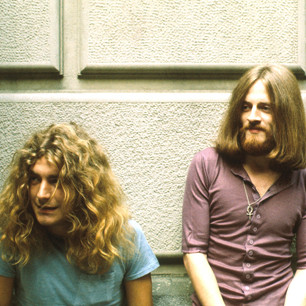 Robert Plant and John Paul Jones of Led Zeppelin
Robert Plant and John Paul Jones of Led Zeppelin
“Fool in the Rain,” from In Through the Out Door, exemplifies Led Zeppelin’s constant musical evolution. As Jimmy Page asserted amidst punk’s rise, “Zeppelin is not a nostalgia band,” and this song proves it. Inspired by a samba rhythm John Paul Jones and Robert Plant heard while watching the 1978 World Cup, the song incorporates a Latin-infused middle section. Page considered it “a springboard for what could have been,” hinting at future musical directions the band might have explored.
Nobody’s Fault But Mine (1976)
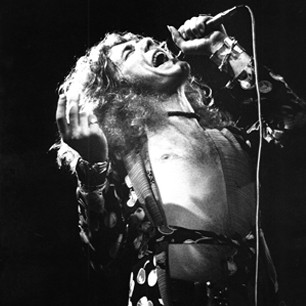 Robert Plant Performing Live in Concert with Led Zeppelin
Robert Plant Performing Live in Concert with Led Zeppelin
“Nobody’s Fault But Mine,” from Presence, is a blues lament with a sci-fi edge, amplifying Blind Willie Johnson’s original stark blues track. Robert Plant’s vocals convey confession and anguish, while Jimmy Page’s opening riff is a truly epic blues statement—vast and distant, like a distress signal from another world. This track showcases Led Zeppelin’s ability to take blues roots to new, expansive sonic territories.
Heartbreaker (1969)
 Jimmy Page Playing Guitar Live in Concert with Led Zeppelin
Jimmy Page Playing Guitar Live in Concert with Led Zeppelin
“Heartbreaker,” from Led Zeppelin II, is renowned for Jimmy Page’s groundbreaking guitar solo, a heavy metal textbook of pyrotechnics that reportedly inspired a young Eddie Van Halen. The song itself, a scathing take-down of a two-timing woman named “Annie,” became a live staple. During performances, Page would often incorporate excerpts from Bach’s “Bourrée in E minor” and other musical quotes into his extended improvisations, showcasing his virtuosity and musical breadth.
Dancing Days (1973)
 Led Zeppelin Band Photo featuring Jimmy Page, Robert Plant, John Bonham, and John Paul Jones
Led Zeppelin Band Photo featuring Jimmy Page, Robert Plant, John Bonham, and John Paul Jones
“Dancing Days,” from Houses of the Holy, is a vibrant, energetic track inspired by Jimmy Page and Robert Plant’s trip to Bombay. Recorded at Mick Jagger’s country estate, Stargroves, the band was so enthralled with the song that they danced to it on the lawn after recording. The music, particularly the searing slide guitar line, blends Eastern influences with a summery, almost Beach Boys-like lyrical theme of idyllic ease, creating a unique and joyful Zeppelin song.
D’yer Mak’er (1973)
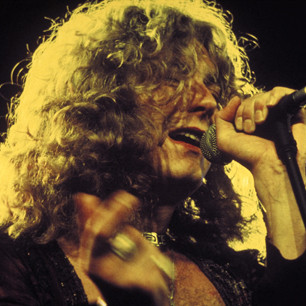 Robert Plant and Jimmy Page Performing Live in Concert with Led Zeppelin
Robert Plant and Jimmy Page Performing Live in Concert with Led Zeppelin
“D’yer Mak’er,” from Houses of the Holy, often mispronounced as “Dire Maker,” is a play on words for “Jamaica.” Born from the band’s interest in reggae, a relatively new genre in 1972, the song evolved into a unique blend of rock-steady, heavy metal, and doo-wop. Robert Plant’s playful, giddy vocals transform stuttered vowel sounds into a catchy pop melody, demonstrating Led Zeppelin’s ability to experiment with diverse styles while maintaining their signature sound.
Gallows Pole (1970)
 Robert Plant and John Paul Jones Playing Mandolin Live in Concert with Led Zeppelin
Robert Plant and John Paul Jones Playing Mandolin Live in Concert with Led Zeppelin
“Gallows Pole,” from Led Zeppelin III, is the oldest song in Led Zeppelin’s repertoire, tracing its origins back centuries to the folk ballad “The Maid Freed From the Gallows.” Led Zeppelin’s rendition features a dramatically escalating arrangement, with Jimmy Page making his banjo debut and John Paul Jones contributing on mandolin. The song builds to a frantic pace before concluding with a chilling, horror-show ending, showcasing the band’s ability to infuse traditional folk with their signature dramatic intensity.
The Song Remains the Same (1973)
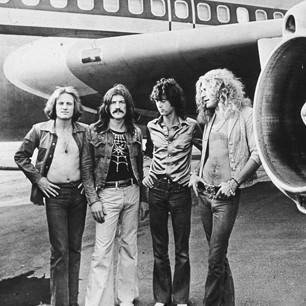 Led Zeppelin Band Photo featuring Jimmy Page, Robert Plant, John Bonham, and John Paul Jones
Led Zeppelin Band Photo featuring Jimmy Page, Robert Plant, John Bonham, and John Paul Jones
“The Song Remains the Same,” from Houses of the Holy, was conceived shortly after Jimmy Page and Robert Plant’s 1972 trip to Bombay. Initially intended as an instrumental track, this raga-influenced song is one of Zeppelin’s most optimistic and celebratory. It expresses the universality of music just as Led Zeppelin was becoming arguably the biggest band in the world, reflecting their global reach and impact.
The Battle of Evermore (1971)
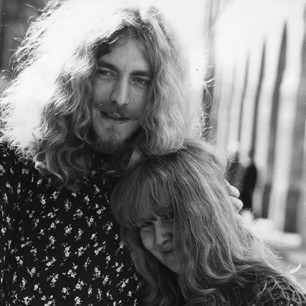 Robert Plant and Sandy Denny Performing Together
Robert Plant and Sandy Denny Performing Together
“The Battle of Evermore,” from Led Zeppelin IV, is a striking example of Led Zeppelin’s deep appreciation for folk music. Featuring Sandy Denny of Fairport Convention, and Jimmy Page on mandolin (an instrument he was new to), the song is a unique collaboration. Lyrically, it’s their most explicit nod to The Lord of the Rings, with references to wraiths and battles, blending folk instrumentation with fantasy themes in a captivating way.
Over the Hills and Far Away (1973)
 Led Zeppelin Band Photo featuring Jimmy Page, Robert Plant, John Bonham, and John Paul Jones
Led Zeppelin Band Photo featuring Jimmy Page, Robert Plant, John Bonham, and John Paul Jones
“Over the Hills and Far Away,” from Houses of the Holy, is surprisingly, Led Zeppelin’s first single that didn’t break into the Top 50. This upbeat, boogie-rock track features Robert Plant’s heartfelt lyrics of longing and Jimmy Page’s driving, open-road guitar strumming. The song’s energetic rhythm and catchy melody make it an uncharacteristically poppy yet undeniably Zeppelin track.
What Is and What Should Never Be (1969)
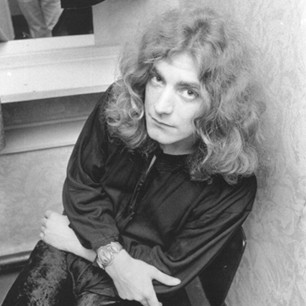 Robert Plant in a Moody Portrait with Led Zeppelin
Robert Plant in a Moody Portrait with Led Zeppelin
“What Is and What Should Never Be,” from Led Zeppelin II, is one of Robert Plant’s earliest songwriting efforts, rumored to be about an affair with his wife’s younger sister. The song’s production is notably woozy and dreamlike, with dramatic shifts between tender, pastoral verses and a powerful, almost demonic chorus. This dynamic contrast creates a musical tension between romantic yearning and forbidden desire.
The Ocean (1973)
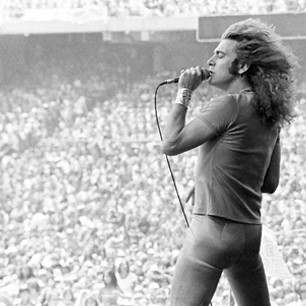 Robert Plant Performing Live in Concert with Led Zeppelin
Robert Plant Performing Live in Concert with Led Zeppelin
“The Ocean,” from Houses of the Holy, is dedicated to Led Zeppelin’s vast fanbase, their “sea of fans.” The song features a complex, funky beat that has challenged air drummers for decades. It also showcases John Bonham’s vocal talents, as he and John Paul Jones provide backing vocals for the outro. Bonham’s count-in at the song’s beginning is iconic, sounding like a blend of pirate and rapper, setting the stage for this unique and energetic track.
Dazed and Confused (1969)
 Jimmy Page Playing Bowed Guitar Solo with Led Zeppelin
Jimmy Page Playing Bowed Guitar Solo with Led Zeppelin
“Dazed and Confused,” from Led Zeppelin, became a central piece of Led Zeppelin’s live performances for many years. Originally written and recorded by singer-songwriter Jake Holmes in 1967, Jimmy Page reimagined it for Led Zeppelin’s debut album. Their live versions, featuring Page’s extended bowed guitar solos, often stretched to an incredible 45 minutes, turning the song into a psychedelic-blues epic and a testament to their improvisational prowess.
Communication Breakdown (1969)
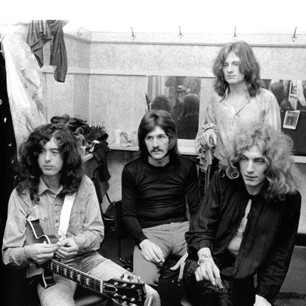 Led Zeppelin Backstage featuring Jimmy Page, Robert Plant, John Bonham, and John Paul Jones
Led Zeppelin Backstage featuring Jimmy Page, Robert Plant, John Bonham, and John Paul Jones
“Communication Breakdown,” from Led Zeppelin, is a proto-punk track with a down-stroke guitar riff that foreshadowed punk rock by seven years. While lyrically alluding to Eddie Cochran’s “Nervous Breakdown,” Led Zeppelin’s aggressive, almost frantic attack was groundbreaking. The song’s raw energy and intensity were brutally new for its time, marking a significant departure and paving the way for future hard rock and punk movements.
Going to California (1971)
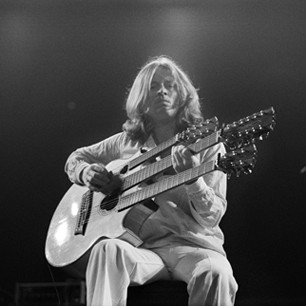 John Paul Jones Playing Mandolin and Jimmy Page Playing Triple Neck Guitar with Led Zeppelin
John Paul Jones Playing Mandolin and Jimmy Page Playing Triple Neck Guitar with Led Zeppelin
“Going to California,” from Led Zeppelin IV, is arguably Led Zeppelin’s most beautiful and gentle song. Jimmy Page’s delicate acoustic fingerpicking intertwines with John Paul Jones’ mandolin, while Robert Plant adopts a subtle country twang in his vocals. Rumored to be about Joni Mitchell, the song could equally be about the idealized “California girl” of the era, capturing a sense of longing and romanticism that was prevalent in 1971.
Misty Mountain Hop (1971)
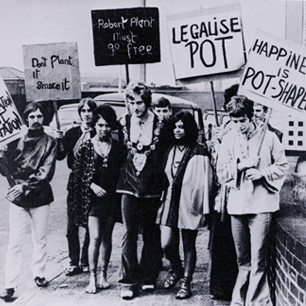 Robert Plant in a Portrait with Led Zeppelin
Robert Plant in a Portrait with Led Zeppelin
“Misty Mountain Hop,” from Led Zeppelin IV, is a uniquely funky track despite its lyrical themes of flower children and Tolkien. John Paul Jones’ humid electric piano locks in perfectly with Jimmy Page’s insistent riff and John Bonham’s powerful, slippery groove. Robert Plant’s lyrics describe a clash between hippies and police, leading to a desire to escape to fantastical, Tolkien-esque mountains, though Plant later stated the lyrics were simply about “being caught in the park with wrong stuff in your cigarette papers.”
When the Levee Breaks (1971)
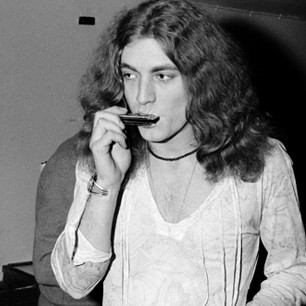 Robert Plant Playing Harmonica with Led Zeppelin
Robert Plant Playing Harmonica with Led Zeppelin
“When the Levee Breaks,” from Led Zeppelin IV, showcases Led Zeppelin as a blues band operating at the edge of a sonic abyss. Lyrically adapted from Memphis Minnie’s blues about a great flood, the song’s production by Jimmy Page is otherworldly, utilizing heavy echo, reversed harmonica, and slowed-down playback. John Bonham’s drums, recorded in the stairwell of Headley Grange, are monumental and became a highly influential sample, famously used as the opening for the Beastie Boys’ Licensed to Ill.
Rock and Roll (1971)
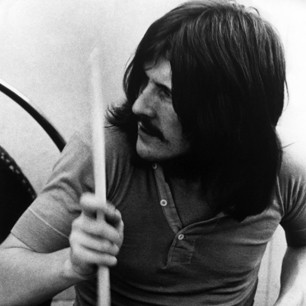 John Bonham Playing Drums with Led Zeppelin
John Bonham Playing Drums with Led Zeppelin
“Rock and Roll,” from Led Zeppelin IV, emerged spontaneously during rehearsals for “Four Sticks.” John Bonham’s impromptu drum intro, echoing the opening of Little Richard’s “Keep A Knockin’,” sparked the song’s creation. Initially titled “It’s Been a Long Time,” the song expresses a longing for youthful energy and the innocence of 1950s rock and roll. While referencing old dances and songs, “Rock and Roll” redefines the genre with a fierce, modern intensity, showcasing Led Zeppelin’s ability to revitalize classic forms.
Immigrant Song (1970)
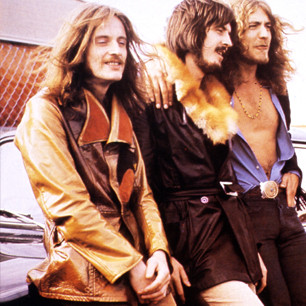 Led Zeppelin Band Photo featuring Jimmy Page, Robert Plant, John Bonham, and John Paul Jones
Led Zeppelin Band Photo featuring Jimmy Page, Robert Plant, John Bonham, and John Paul Jones
“Immigrant Song,” from Led Zeppelin III, boasts one of hard rock’s most unforgettable opening lines: “We come from the land of the ice and snow.” Inspired by Led Zeppelin’s concert in Iceland in June 1970, where the sun barely sets, Robert Plant’s lyrics evoke Viking imagery, portraying a Norse chieftain leading a sea invasion. Jimmy Page’s menacing, staccato riff and Plant’s Tarzan-like yell add to the song’s primal, powerful atmosphere, creating a track that is both forceful and, according to Plant, intended to be “powerful and funny.”
Good Times Bad Times (1969)
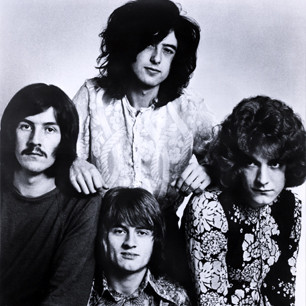 Led Zeppelin Band Photo featuring Jimmy Page, Robert Plant, John Bonham, and John Paul Jones
Led Zeppelin Band Photo featuring Jimmy Page, Robert Plant, John Bonham, and John Paul Jones
“Good Times Bad Times,” the opening track of Led Zeppelin’s debut album, serves as their explosive introduction to the world. With defiant lyrics (“I don’t care what the neighbors say”), a striking, “stun-gun” riff, and John Bonham’s restless, syncopated drumming, the song immediately established Led Zeppelin’s dynamic and innovative approach to rock music. Page highlighted Bonham’s “amazing technique” in the drum pattern, underscoring the band’s intention to use their four-piece setup in exhilarating new ways.
Ramble On (1969)
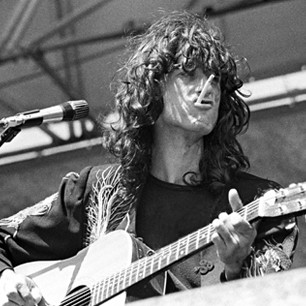 Jimmy Page Playing Guitar with Led Zeppelin
Jimmy Page Playing Guitar with Led Zeppelin
“Ramble On,” from Led Zeppelin II, marks the emergence of Robert Plant’s mystical storyteller persona. Blending classic folk-blues themes of travel and romance with J.R.R. Tolkien’s The Lord of the Rings, the song is a unique mix of genres. Starting with Jimmy Page’s acoustic guitar and John Bonham’s percussive rhythm (likely played on his knees or a guitar case), the song transitions to a powerful chorus with Page’s electric guitar and Plant’s vocals shifting from a Hobbit-like character to a rock sex symbol.
Kashmir (1975)
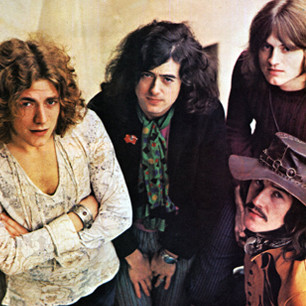 Led Zeppelin Band Photo featuring Jimmy Page, Robert Plant, John Bonham, and John Paul Jones
Led Zeppelin Band Photo featuring Jimmy Page, Robert Plant, John Bonham, and John Paul Jones
“Kashmir,” from Physical Graffiti, is arguably Led Zeppelin’s most monumental and epic track. Enhanced by outside musicians—a string and brass section augmenting John Paul Jones’ Mellotron—the song creates a massive soundscape. Jimmy Page’s Arabic-Indian inspired guitar riff, John Bonham’s powerful, processional drumming, and Robert Plant’s lyrics, born from a long drive through Morocco, combine to create a truly unique and powerful musical experience. Plant himself called “Kashmir” “the definitive Zeppelin song,” highlighting its importance in their catalog.
Black Dog (1971)
“Black Dog,” from Led Zeppelin IV, features what is arguably Led Zeppelin’s most iconic riff, conceived by John Paul Jones with a Muddy Waters song in mind. Jimmy Page transformed it into a complex, powerful riff on his Les Paul, layered with multi-tracked rhythm guitar and John Bonham’s stealthy groove. Robert Plant’s suggestive vocal performance, with lines like “Hey, hey, mama, said the way you move/Gonna make you sweat, gonna make you groove,” adds to the song’s raw energy and impact.
Stairway to Heaven (1971)
“Stairway to Heaven,” from Led Zeppelin IV, is the quintessential power ballad of the 1970s rock era. From its delicate, Elizabethan-inspired acoustic introduction to Robert Plant’s mystical lyrics and Jimmy Page’s soaring, improvised guitar solo, the eight-minute song is a masterpiece of gradual intensity. Page described its build-up as “speeds up like an adrenaline flow,” perfectly complementing Plant’s narrative of excess and spiritual seeking. “Stairway to Heaven” remains a milestone not just for Led Zeppelin, but for rock music itself.
Whole Lotta Love (1969)
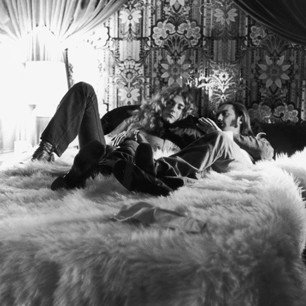 Robert Plant Performing with Led Zeppelin
Robert Plant Performing with Led Zeppelin
“Whole Lotta Love,” from Led Zeppelin II, is Led Zeppelin’s definitive anthem—raw, audacious, and utterly captivating. Robert Plant’s suggestive vocals, declaring “I’m gonna give you every inch of my love” and referencing “backdoor man,” are just the beginning. The song’s midsection is a psychedelic journey, a whirlwind of sensual moans, cymbal crashes, and theremin effects, enhanced by dynamic stereo panning. Jimmy Page’s powerful riff, created with a metal slide and backward echo, is one of the most impactful ever played on a Les Paul. While Plant acknowledged lyrical inspiration from Willie Dixon’s “You Need Love,” “Whole Lotta Love” became much more than a cover; it became a defining statement of Led Zeppelin’s musical power and innovation.
The Enduring Legacy of Led Zeppelin Songs
Led Zeppelin’s song catalog is a testament to their musical genius, innovation, and enduring appeal. From blues-infused rock to folk-inspired ballads and experimental soundscapes, their music continues to inspire and captivate. Exploring Led Zeppelin songs is not just listening to music; it’s experiencing a pivotal chapter in rock history.
